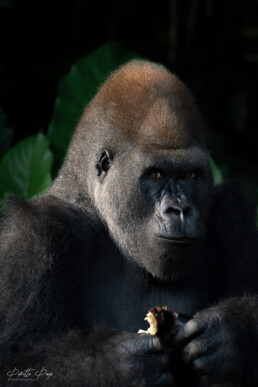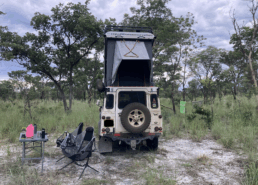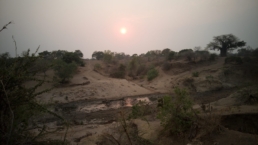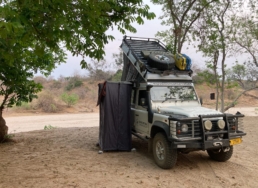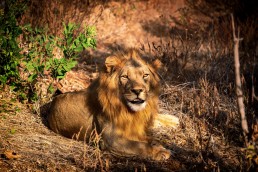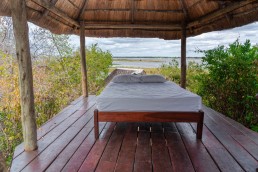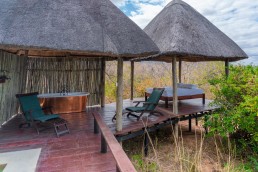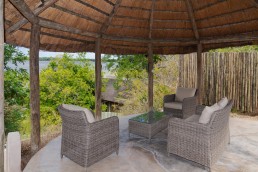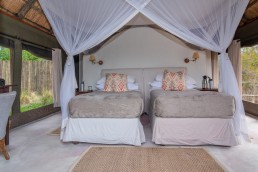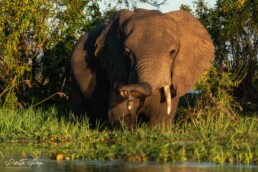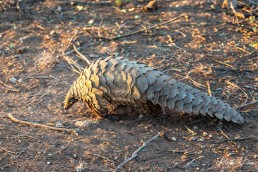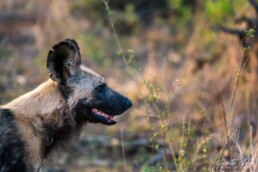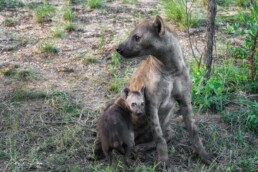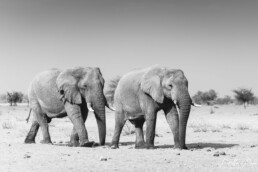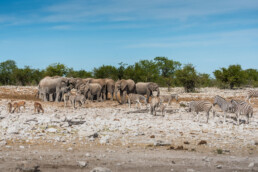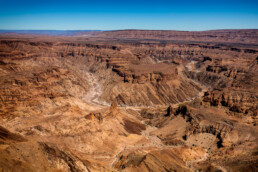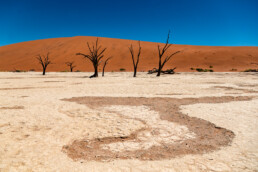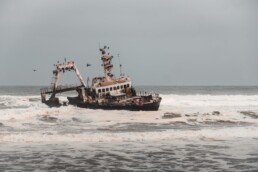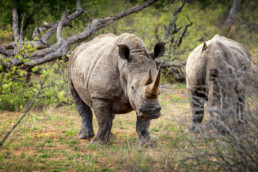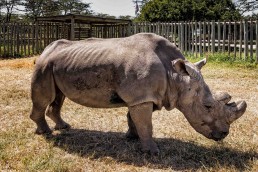The West African Overlanding Adventure of 2025 – From Namibia to Finland
In early 2025, we embarked on an epic overlanding journey, driving from Namibia to Finland through the rugged and fascinating countries of West Africa.
This wasn’t just a road trip—it was a true overland adventure filled with challenging borders, remote tracks, wild camps, and incredible wildlife encounters. We completed the journey in just over four months, departing Namibia at the end of February and arriving in Helsinki on June 26th.
Here’s a “nutshell” recap about our overland travel route through West Africa and Europe. Most people drive this route from north to south, so there was not much information available about the route in the opposite direction, from south to north. Especially, finding information about the visas was tricky.
However, rest assured that we will also upload a comprehensive visa guide to our website soon! From there, you will find all the information concerning the visas you’ll need for this journey (for EU passport holders).
We’re also writing detailed stories about all the adventures we had in our Substack publication. So remember to subscribe so that you won’t miss any intriguing stories!
Namibia – One of Our Favorite Countries
We left our friends’ place in Windhoek after mid-February and first drove to say our goodbyes to Swakopmund, the coastal town where we had spent so much time during the years.
On our way north, we decided to stop by one of our all-time favorite places in Namibia: the Hoanib River! The riverbed was still dry, so we got to say goodbye to our beloved desert-adapted elephants, too, and we spent two beautiful nights wild camping in this fantastic, remote region.
We also spent excellent nights wild camping at the Menhir 4×4 track and woke up to find brown hyena tracks close to our vehicle in the morning.
The road then took us to Angola through the Caprivi region. When we left Namibia, it felt as if the West African adventure had truly begun!
Angola – The First Steps of Our Overland Adventure
Our first country on this West African overland route was Angola. Our choice of route from Namibia to Angola took us through a remote track with a bit of mud, but it was still fun to drive.
The landscapes were breathtakingly beautiful and diverse, but the language barrier (as neither of us speaks Portuguese, only a little Spanish) made things a bit tricky. Still, it was a lovely and enjoyable beginning to our journey north.
The Democratic Republic of the Congo (DRC) – A Pleasant Surprise
From Angola, we continued into the Democratic Republic of the Congo (DRC).
Here, we crossed the mighty Congo River at the same area where David Livingstone once marveled at the river flowing into the Atlantic Ocean. Although our time in the DRC was brief—just a few days—the experience felt surreal and adventurous. We drove in the dark because we lost several hours at the border and then found an isolated wild camp on an old quarry. All officials were friendly and professional, and we encountered no problems.
We spent only one night in the DRC, but it sure was a memorable part of our journey.
The Republic of Congo – All About the Western Lowland Gorillas
On March 14th, we crossed into the Republic of Congo, right on time for our pre-received visas. This country offered one of the biggest highlights of our West Africa overland trip: seeing the Western Lowland Gorillas and visiting the remote and fantastic Odzala-Kokoua National Park.
We had initially planned to continue to Gabon, but border closures and visa difficulties due to the then-upcoming general elections forced us to adjust our overlanding route northward, toward Cameroon.
Cameroon – Onwards Through the Legendary 4×4 Overland Track: Banyo Crossing
We crossed Cameroon relatively quickly—in just four days, five nights—but packed in a lot. The lively capital, Yaoundé, gave us a glimpse of city life, while the legendary Banyo route unexpectedly pushed our 4×4 driving skills more than we had anticipated. For anyone passionate about overland travel, the Banyo track into Nigeria is a true test of both vehicle and driver – especially so, if there have been rains!
Nigeria – Warm Welcomes and Non-Existent Personal Spaces
Nigeria turned out to be a pleasant surprise in our West African overlanding adventure. The people were extremely friendly. However, they didn’t have a clue about personal space as a concept, and that made us, as Finns, feel pretty uncomfortable at times. However, we eventually adapted and found that monasteries and churches offered some of the safest and most welcoming camping possibilities.
Driving was relatively smooth, and despite the numerous military/police/local checkpoints, we encountered no issues. Even Lagos turned out to be less confusing and chaotic than we expected!
One of the highlights of. Nigeria was also visiting the Afi Mountain, where we saw the mandrills and sweated profusely in the extremely humid weather.
Benin – The Land of Voodoo
Benin was fascinating—we learned more about the country’s unique and lively voodoo culture, an intriguing topic! Aboméy had one of the strangest feelings of a town we’ve ever visited. Still, we had a good guide on our voodoo tour and learned a lot more about this animistic, official religion of Benin.
If we had had more time to spend in Benin, we would’ve also wanted to visit the Pendjari National Park in the northern part of the country. However, the rains had already arrived there as well. So we stick to the south.
We also took a brief break and spent a week in the modern, neat, and well-functioning Cotonou. We arranged visas for the onward journey, repaired and serviced our Defender, and enjoyed some rest in an air-conditioned apartment.
Togo – A Quick Overland Stop
We crossed Togo in just one night before moving on to Ghana. Such is sometimes the reality of long-distance overland travel: sometimes you pass through quickly, saving countries for “next time” (whether that ever comes or not).
Lomé seemed an uninteresting place, so we didn’t really feel bad about skipping this small country for now.
Ghana – Friendly Faces on the Coast
Ghana was welcoming, with English-speaking locals and a vibrant coastal atmosphere. However, we had to use all our negotiation skills at the border, so that we were allowed in without a Carnet de Passage and without paying an exorbitant amount for our Namibian-registered vehicle – but we succeeded after hours of negotiation!
After that, we enjoyed what the coastal highway had to offer: relaxing beach camps, freshly grilled fish, and a lot of ocean spray.
Heavy rains had already started, also, i.e., in Mole National Park, making wildlife viewing difficult, so we stuck to the coast before continuing on our overlanding route westward. Our negotiation skills were put to another grilling test at the exit border, where we again managed to exit without a carnet de passage and without paying a dime. We congratulated ourselves–for a reason!
Ivory Coast – Contrasts of Overland Travel
In Ivory Coast, we found many great wild camps but were saddened by the endless palm oil plantations replacing natural landscapes. Abidjan turned out to be an expensive and futile detour on our way towards Guinea.
Guinea – The Challenge of Crossing Through in Five Days
Guinea tested us with a strict timeline—we had only five days to cross without needing a visa sticker from Conakry. Despite the rush, Guinea left us with memories of lush green scenery, friendly people, and challenging but rewarding overland driving.
Some roads were great, while others had once been roads but were now more like mudholes, one after another. But we made it in five days to the border of Senegal!
Senegal – Desert Overland Travel and Ocean Views
Senegal reminded us of Namibia with its desert-like landscapes. We also managed to avoid Dakar because we got a free (!) Passavant for our Defender for 30 days at the border without any hassle–and not the usual 5-day one that many overlanders have got. We were pleased about that.
We got to enjoy places like the sacred “cat tree” and relaxing days by the sea at the famous, but a bit uninspiring Zebra Bar. For overlanders, Senegal offers a good mix of adventure and downtime.
Mauritania – and the Harsh Sahara Desert Winds
Our first fully Islamic country, Mauritania, was a rugged one. Harsh Harmattan winds swept the Sahara and challenged both us and our Defender. It was challenging to find decent places to camp that offered at least some shelter from the relentless winds.
Yet this stretch of desert overlanding was unforgettable—especially when we witnessed the famous, massive Iron Ore train crossing the sands. And on this leg, we also got stuck, but dug ourselves out in the dark by using our recovery tracks for the first time ever!
Mauritania had unreal landscapes, but the shops offered practically nothing to buy, and the strict Islamic atmosphere didn’t really entice us. But it was an experience.
Western Sahara & Morocco – The Gateway Out of Africa
Western Sahara, now part of Morocco, offered endless dunes, wild camps, and harsh desert winds, which made cooking with gas extremely challenging. It still reminded us of Namibia so much, like the area of the Menhir 4×4 tracks in the Kunene. We must admit that we already missed Namibia.
Finally, in Morocco, it felt as if we had already reached Europe. Modern, organized, and full of delicious food and colorful souks (markets), Morocco was a good end to our West Africa overland route. From Tangier, we ferried across the Strait of Gibraltar into Spain, feeling both proud and nostalgic for completing a massive adventure through the continent.
Overlanding Through Europe – The Final Push to Finland
Once in Europe, our Defender rolled north along the eastern coast of Spain, through France, Germany, Poland, Lithuania, Latvia, and Estonia. To our surprise, France turned out to be our favorite country on this route. It offered great wild camps, lovely surroundings in little villages, and good food.
From Tallinn, Estonia, a final ferry brought us to Finland, where we arrived in Helsinki on June 26th, 2025—after nearly four and a half months on the road.
When we drove out of the ferry to the shores of Helsinki with Honey Badger the Defender, it felt quite unreal–we were really there and we had driven all the way from Namibia! We did it!
Reflections on Our West Africa Overlanding Adventure
This West Africa overland expedition was everything we had anticipated: challenging, rewarding, unpredictable, and unforgettable. From the wild Western Lowland Gorillas in the Congo to the Sahara winds in Mauritania, it tested us in many ways and gave us memories that will last a lifetime.
After six years (!) of overland travel all around Africa, leaving the continent was a bittersweet experience, as Africa is forever imprinted into our hearts and souls – and we miss it already. We will definitely return someday, but now it’s time for something else.
New adventures await—and yes, we’re already planning our next overlanding expedition on a new continent!
So stay tuned! The end of one expedition is just the beginning of another one. 🙂
Essential Tools for a Successful Overlanding Travel Adventure: A Comprehensive Guide
When you’re gearing up for your first overlanding travel adventure, one of the most common questions is, “What essential tools and equipment should I have in my vehicle?”
It’s a question that pops up frequently in overlanding travel forums and discussion groups. While plenty of “round-up” lists are available online, we’ve consolidated the best advice into this definitive guide. Whether you’re just starting out or looking to refine your gear setup, this post will help you prepare for a safe and enjoyable journey.
Want to get overlanding travel tips and stories right in your inbox? Subscribe to our Substack!
Basic Recovery Gear: Your Lifeline in Tough Situations
Overlanding travel often takes you off the beaten path, where getting stuck in mud, sand, or snow is more a question of “when” than “if.” That’s why having a solid recovery gear kit is non-negotiable.
Here’s what you need to include:
- Tow Rope: A sturdy tow rope is your first line of defense when you need a quick tug out of a sticky situation.
- Snatch Strap/Kinetic Strap: These are designed to stretch and recoil, providing the kinetic energy needed to free a stuck vehicle.
- Snatch Block: A snatch block is useful in winching situations. It helps change the direction of the pull and doubles the pulling power of your winch.
- Tree Saver: Protect the trees you anchor your winch to with a tree saver strap, which distributes the load and prevents damage.
- D-Ring Shackles: To secure your straps and ropes, you’ll need at least two or three of these strong connectors.
- Thick Leather/Fabric Gloves: Protect your hands from frayed wires and sharp edges while handling recovery gear.
This basic recovery set can make the difference between being stranded for hours or getting back on the trail in minutes.
While a winch is optional, it’s a valuable asset, especially if you’re traveling solo. Just ensure your winch is rated for your vehicle’s weight and that the cable or rope is always in top condition. Regular maintenance checks are crucial — you don’t want to discover a malfunction when you’re stuck in the middle of nowhere.
Additionally, your vehicle must have strong, purpose-built recovery points, typically attached to the chassis. If your vehicle lacks these, invest in having them professionally installed. And remember, never use factory “attachment points” for recovery — they’re designed for securing the vehicle during transport and can fail catastrophically under stress.
Supplementary Recovery Tools: Don’t Leave Home Without Them
While your basic recovery kit covers most scenarios, a few additional items can further increase your self-recovery capability:
- Metal Shovel: A must-have for digging out tires from sand, mud, or snow.
- Recovery Boards: Essential for gaining traction when your tires are spinning helplessly. Quality boards like TREDs or MaxTrax are worth the investment; avoid all flimsy alternatives (they’ll just break)!
- High-Quality Flashlight: A reliable flashlight is crucial for any night-time recovery efforts or roadside repairs.
- Tire Repair Kit: A comprehensive tire repair kit will keep you rolling from punctures to slow leaks.
- Tire Inflator or Filling Foam: Handy for quick, temporary repairs until you can get a proper fix.
- Sturdy Bottle Jack: Necessary for lifting your vehicle when changing a tire.
- Hi-Lift Jack: While not always necessary, a Hi-Lift jack can be invaluable in certain situations. However, it’s heavy, and using it incorrectly can be dangerous. Proper training is essential before relying on it in the field.
Additional Gear for Peace of Mind
Beyond recovery tools, a few other items can make your 4×4 overlanding travel experience smoother and safer:
- Radiator Seed Net: Keeps debris from clogging your radiator, preventing overheating in tough environments.
- Q20/WD40 Spray Bottle: Perfect for cleaning and protecting electrical connections exposed to moisture.
- Duct Tape & Cable Ties: These versatile items can temporarily fix a multitude of issues.
- Electrical Tape: Vital for patching up damaged wiring and protecting against short circuits.
- Metal Jerry Cans for Water and Diesel/Petrol: Especially if your vehicle doesn’t have a long-range fuel tank, have a 20-litre jerry can or two for extra fuel and a longer range. One jerry can for drinking water is also recommended; water is the most important thing to have if you get stranded somewhere. It’s usually a yellow can for diesel, green for petrol, and blue for drinking water. Those NATO jerries are the best and most robust.
- Water filter/purifier: Having a water filtering system may save your life! Always carry one. We use the Lifestraw Mission system for quick and efficient purification during our overland travel.
Basic Tool Set: Ready for On-the-Spot Repairs
A well-curated tool set is indispensable on any overlanding trip. You don’t need a massive box filled with every tool under the sun — just a selection of essentials like wrenches, spanners, and pliers that can handle most repairs and adjustments on the road.
Spare Parts: Be Prepared for the Unexpected
One of the best ways to avoid being stranded is by carrying a few key spare parts.
Research your vehicle’s weak points and stock up on components that are prone to failure and hard to find in remote locations. For example, on our Land Rover Defender Puma 2.4, we carry tie rod ends, bushings, wheel bearings, spare relays, an ignition switch, and basic maintenance parts like filters and fluids.
Conclusion: Gear Up for Your 4×4 Overlanding Travel Adventure
Equipping your vehicle with the right tools and gear is essential for any overlanding trip.
This list covers the basics, but as you gain more experience, you might find other items that suit your specific needs. The key is trying to be prepared for whatever the road — or lack thereof — throws at you.
So, pack up, check your gear, and confidently hit the road. Here’s to your next great overlanding travel adventure!
Happy travels! 😎
* This post contains affiliate links. Using them will not cost you anything extra, but we may receive a small commission if you do. A true win-win situation!
Experiencing the Amazing Chitake Springs in Mana Pools National Park in Zimbabwe
We were lucky to briefly visit Chitake Springs in the prime time of mid-October, when the dry season reached its peak and game viewing was at its highest in the Mana Pools National Park in Zimbabwe.
Here is a post about the awesome Chitake Springs! This post is also packed with information about camping in Chitake Springs and the prices of Chitake Springs in Mana Pools.
Overall, it was a great experience, even though we were there very briefly, only for one night. But one night was all that was available to book as a walk-in guest, so we grabbed the chance.
Driving to Chitake Springs in Mana Pools National Park in Zimbabwe
Driving to Chitake Springs in Mana Pool’s National Park is pretty straightforward. From the 2nd gate, you turn right onto the transfer road, which is in the opposite direction if you were going to the Main Camp (Nyamepi).
Note that you’re not allowed to go to Chitake Springs for a day visit without paying the $35 day visit fee at the Main Camp! So if you don’t have a booking or a day visit fee paid, you cannot go there.
We do understand this policy, as the place is so small that having a lot of day visitors around would ruin the atmosphere.
You only need to drive on the transfer road for about 8 kilometers. Then, you turn off from that main road onto a small dirt track that leads straight into the bush.
At first, driving is slow but easy for a few kilometers. Still, after that, it’s better to engage your low gear and controllably maneuver yourself down the relatively steep sand slopes to the campsites.
Then, if you want to go to the other side of the river, where the Springs are located, you need to cross the riverbed, which has some sand (but not deep), and go up to the other side.
The Beautiful Chitake Springs
The Chitake Springs itself is gorgeous, and you can go and drive to the famous Fig Tree, from where you’ll have the best views and positions to watch the opposite slopes and the Spring at the bottom.
You can set up your chairs for a picnic and sit out your day, watching which animals come down to drink. If you are fortunate, you may even see the herd of buffaloes coming down for a drink amongst those famous dust clouds.
But – having a large herd of buffaloes is quite rare.
While we were there, we also met a film group. They had been there at the Fig Tree for three weeks(!) already, and only one day had they had the chance to film a big group of 400 buffaloes coming down the opposite hill.
They had camera traps set all over the place to watch out for them and to send an alert to avoid missing anything special if they were elsewhere at that time.
We spent only one night at Chitake Springs’ campsite 1, which is one of the best on the river shore, but it is on the other side of the river from the Springs themselves.
The Best Campsites in Chitake Springs
The best campsites at Chitake Springs are numbers 1 and 3B. Many people also prefer the Baobab campsite on the same side of the river as the Springs.
If you go to Chitake Springs, try booking either of these campsites. Campsite #2 is on the other side of the river, too. It’s closer to the Springs itself but it’s very bushy with no views to anywhere, and you still have to drive to the Fig Tree to see the Springs. This is why we don’t recommend that campsite.
It’s also not allowed to camp at the Fig Tree (for obvious reasons), but you can spend the whole day there, make your lunch, and just sit and wait. And it will be a day well spent.
We observed many animals come to drink during the day: impalas, kudus, a lot of baboons, vervet monkeys, etc. And four buffaloes.
The Price of Chitake Springs
Let’s face it: it is expensive to camp in Chitake Springs.
During our almost five years of travels around these areas, it is one of the most expensive campsites we’ve ever visited in Southern and Eastern Africa.
It costs US$300 per campsite per night if you book it in advance.
But, if you go to the main office in the Nyamepi camp as a walk-in customer, you can book it for US$70 per person per night (as a walk-in price). These prices were valid in October 2023, and they are subject to change in 2024. So, please double-check the current prices before you go to Mana Pools.
However, US$70 per person is still expensive, so you have to consider whether it is worth it.
We had heard so much praise for this place, so we wanted to see and experience it. That’s why we stayed one night, which happened to be free on campsite 1 when we visited Mana Pools.
Chitake Springs is usually fully booked in advance, so we were pretty lucky to find a spot even for that one night.
Download the original info booklet from Mana Pools
Camping prices in Chitake Springs, Mana Pools National Park:
US$300 per campsite, if booked in advance
US$70 per person, per night, if booked as a walk-in customer from the Main Office in Nyamepi Camp
These prices were valid in October 2023. They are subject to change in 2024, so please double-check the current prices before you go to Chitake Springs.
Was Going to Chitake Springs Worth It?
So, in the famous hindsight, was it worth it? Well, yes, it was for us.
However, to get the most out of that place, you would ideally need to spend at least three nights over there and preferably have a guide who could take you to bushwalks into the surrounding areas.
Without the possibility of going on a walk in the bush, you don’t get so much out of your visit. You can drive only a few tracks around, and the area is pretty tiny.
There is also one big lion pride (33 members, we heard!) living in the Chitake Springs area, but you cannot go into the bush alone without an armed guide.
It could potentially be hazardous for you. So, you would need a Game Ranger to take you on the walks to get around.
But then again, if you stay at the Baobab campsite, you will have absolutely fabulous 360-degree views all over the Chitake Springs area, and you may see more animals from there, too.
The Baobab campsite is on top of a high hill, so it can be very windy, but you’ll be in total solitude amidst the hundreds of years-old baobabs standing all around you.
It is highly recommended. Even if you don’t stay overnight, go and have a look at the place. Stop, make some coffee, sit around, and admire the views!
Our Experiences at Campsite 1 in Chitake Springs
During the night, we heard many lions roaring nearby. We also saw some tracks in the morning, but when we looked for them later in the day, we couldn’t find them.
The lions were somewhere in the bushes, which you couldn’t see from the driving tracks. As said, we would have needed a guide to go into the bush on foot to find them, and we didn’t have one, so we couldn’t go.
It frustrated us quite a bit, but don’t ever be that stupid that you would wander into a thick bush where you know that lions are around without a professional, armed guide! That could cost you your life in the worst-case scenario.
There is a saying, “It’s not the lion you see that gets you.” – Always remember that!
So, if you’d like to experience Chitake Springs at its best, go with a guide or hire a Ranger to take you on bush walks. And spend at least three nights there to experience the place fully.
And, if you are lucky, you may even witness the spectacle of a large herd of buffaloes coming down to the Springs to have a drink.
But be aware that that occasion rarely happens! You may have to wait for weeks, or if you are lucky, you may only have to wait a day or only hours. It’s down to luck.
Want to get these stories and tips straight to your inbox? Subscribe to our Substack:
Would We Go Back to Chitake Springs Someday?
Well, honestly, we don’t know. Maybe if we’d have the chance to go there for three days with a guide. But otherwise, we don’t think so.
Generally, it’s better “bang for your buck” to stay in the main camp of Nyamepi (or in the surrounding areas) and drive around the Mana Pools National Park itself in its primary area and along the Zambezi River and experience all the animals over there.
In Chitake Springs, there were fewer animals to be seen compared to the area of Nyamepi and its surroundings. Besides the lions, which we only heard and didn’t see, there were the traditional impalas, kudus, warthogs, etc.
The Chitake Springs was beautiful, and you could get some of that isolated feeling of being in the bush in the middle of nowhere.
But – all the campsites are also pretty close to each other, and you can even hear other people talking if the other campsites are occupied.
It’s also a very popular campsite, so be prepared that it’s almost always fully booked. But if you are lucky like us, you may have a chance to book it as a walk-in customer for the US$70 per person per night price. It is worth it to experience this place once.
But is US$300 for a campsite per night too much? Yes, it is. Even though Chitake Springs was a unique place with fantastic scenery, we think it’s still too steep.
Especially when considering that it’s wild camping without any amenities besides a long-drop toilet, you pay for the experience.
And as it is camping in the middle of the wild, always keep your eyes open to your surroundings!
Wild animals roam freely, especially after dark, so please have a good flashlight with you! But you don’t need to be scared; it’s just part of the fun to be in the middle of the truly wild country.
This time, we didn’t get any iconic photos from Chitake Springs, but even that did not diminish all our positive experiences at this place.
Some Key Take-Aways About Chitake Springs in Mana Pools
Visiting Chitake Springs was an exciting and fun experience, but in general, you may be better off staying in the main area of the park along the Zambezi River, around the Nyamepi camp and doing Game drives there, especially if you want to see a lot of animals.
Mana Pools is a magnificent National Park and a fantastic place! We spent about a week there and fell in love with it. We are already looking forward to visiting again someday.
In conclusion, we’d say that Chitake Springs is a great place to visit at least once in your lifetime. And if you want to stay longer than one night, it’d be better to have a bigger party of people and book it in advance.
The US$300 per night for the campsite will not be so expensive per person when you divide it by 4-6 people. At least two cars could fit nicely at the campsites so that space wouldn’t be a problem.
Maybe next time we’ll have some friends with us?
Self-Drive or All-Inclusive Safari in Lower Zambezi National Park? Check Tips for Both!
As overlanders, we tend to choose self-drive safaris over guided safaris, usually due to both freedom and costs. However, when we know that wildlife sightings and thus photo opportunities will be considerably better on a guided safari, we’ll happily upgrade the choice. Lower Zambezi National Park is one of those few national parks that are best explored on all-inclusive luxury safaris. Read on to learn why – and how to pick the best safari lodges, campsites, and game drive areas in Lower Zambezi.
Characteristics of Lower Zambezi National Park
Lower Zambezi is remote and pristine: it’s known for its unfenced luxury camps, supreme wildlife sightings, and trail-blazing conservation successes. The national park is sandwiched between the gently flowing Zambezi River and drastic Muchinga escarpment, both act as a perfect backdrop for wildlife photography.
Imagine massive elephant herds crossing lush riverine landscape right by your private deck. Then picture exclusive lion and leopard sightings on game drives, where your car might be the only one exploring the winterthorn woodlands and floodplains framed by mopane trees, both trees elephants’ favorite feeding grounds.
We’ve had the best canoe safari experience in Lower Zambezi, and we’ll never forget our first – and last – time catching and releasing a huge tiger fish. Safaris in Lower Zambezi National Park packs in a variety of memorable experiences in just a couple of days!
What Are the Differences Between Lower Zambezi National Park and Lower Zambezi GMA?
Lower Zambezi National Park is surrounded by a huge buffer zone called Lower Zambezi Game Management Area. There are no fences, so wildlife can move freely between the park and GMA, although GMA is dotted with villages, banana plantations, and farms.
Lower Zambezi GMA is enormous: almost 20 000 km2, whereas the national park area is 4 092 km2 (still huge). Generally, the game drives are better inside the national park if you’re looking for unspoilt wilderness and relaxed wildlife sightings – but you can also score great sightings in GMA nearby the borders of the national park.
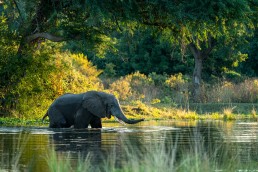
Why Guided Game Drives are Better Than Self-Drives in Lower Zambezi National Park?
If you’re doing self-drives, you’re forced to overnight in Lower Zambezi GMA (Game Management Area) and outside Lower Zambezi National Park, because there are no campsites nor self-catering lodges inside the park – only all-inclusive safari lodges.
Don’t get me wrong, some camps and campsites right outside the gates are stunning and there can be great sightings in the game management area. But, when you venture inside the park, it’s a long drive from the gate to the most wildlife-rich areas, especially if you don’t know where to go.
On your own and without a radio connection to guides, you end up losing precious time and exploring areas where you don’t have many chances to see for example the lions, leopards, and wild dogs.
In Lower Zambezi, some of the animals are more skittish than in South Luangwa. For example, the leopards that we found in Lower Zambezi were extremely cautious. Without a keen eye and correct approach, you won’t score great sightings. That’s why a professional safari guide – and a great spotter – become a real advantage.
If you’re into wildlife photography, it’s also such a luxury to concentrate on your craft instead of driving, spotting the animals, and maneuvering the car to the best possible angle for photos. When you have more time for the footage, it really shows. Fewer game drives can provide better photos!
How to Choose the Best Safari Lodges in Lower Zambezi National Park?
When choosing the best safari lodge, you are choosing the most suitable safari experience for your own needs. So, list your own preferences first to map out what you’re ideally looking for in a safari lodge.
Here are some of the questions that you should think about before searching for the best safari lodges in Lower Zambezi:
- Are you looking for guided game drives and the best guides available?
- Would you prefer a private game drive vehicle with a guide and a spotter to find the animals on your wish list and concentrate on wildlife photography on your own terms?
- Do you prefer a luxury safari or more simple and affordable accommodation? Would you like to stay in a tented camp or a safari lodge with chalets? Would you love to get a riverfront suite for the relaxing views and best wildlife encounters from the privacy of your own room? Do you need wifi during the safari holiday, or would you like to indulge in spa treatments? What about a private plunge pool or multi-course gourmet meals?
- On top of game drives, would you like to do canoe safaris, hikes, cultural tours, sunset cruises, or go tiger fishing on Zambezi River? Many lodges offer versatile activities within Lower Zambezi but not all of them. It pays to pick the lodge according to your own interests.
- Would you like to give back to the community and support wildlife conservation? Some lodges support the work of Conservation Lower Zambezi and local communities, making it possible to visit CSL headquarters (like we did, check our interview with them here) or local villages to enrich your safari experience.
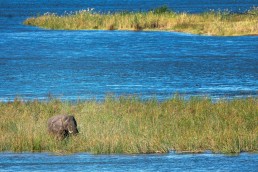
Why We Chose Royal Zambezi Lodge Over the Other Safari Lodges in Lower Zambezi
We have visited Lower Zambezi already in 2015 when we fell in love with one particularly special luxury safari lodge: Royal Zambezi. We wanted to repeat the blissful safari experience because Royal Zambezi has remained throughout the years as one of our happy places. After over 10 African countries, Royal is still among the best safari lodges that we’ve ever visited.
The activities at Royal Zambezi Lodge have had a special place in our hearts: the guide and spotter that we had there in 2015 were spectacular and canoe safari on the Zambezi River out of this world experience.
So, for us, the choice was even too easy: returning to Royal Zambezi Lodge felt a divine idea that gave us hope through tough situations with the Defender. Our 2-night stay in Lower Zambezi was as splendid as it was back in 2015, although the lion and leopard sightings were even better this time!
What Animals You Can See in the Lower Zambezi Lodges and Camps
Elephants love to roam by the Zambezi River and are often seen from the riverside lodges, even crossing through properties. During our both stays in Royal Zambezi Lodge, elephants visited the camp. Both times we were able to observe the elephants from our private deck and take some cool photos.
Elephants, waterbucks, and buffalos like to cross into Zambezi’s seasonal islands, which can be seen from many riverside lodges. Hippos are easy to see in the river, so staying by the river will add hippo sightings, and possibly also crocs, to your leisure time on a safari. Add to that many colorful birds and impressive raptors: a cry of the fish eagle often echoes upon the valley floor.
Activities in Lower Zambezi
- Morning and afternoon game drives in Lower Zambezi National Park and adjoining GMA
- Night game drive with spotlights
- Walking safaris
- River safaris and sunset cruises
- Canoe safaris in Lower Zambezi National Park
- Tiger fishing on Zambezi River
- Village tours in Lower Zambezi Game Management Area
- Hiking to the nearby mountains for sweeping views over the Zambezi Valley and Zambezi River (outside the hottest months, June-August)
Birding (on a game drive, walking safari, boat safari, canoeing, etc) - Bush breakfast and lunch, dinner on a private island, etc – and of course daily sundowners in the bush on game drives!
- Spa treatments
…and more depending on your chosen safari lodge
How Are the Game Drives in Lower Zambezi National Park?
Game drive experience depends on many things: are you self-driving, joining a group morning or afternoon drive, or are you having your private safari vehicle with a guide? When looking for the best results, we definitely recommend the latter.
Generally, a basic 2- to 3-hour shared game drive can feel short in Lower Zambezi because the distances to the best game drive areas are long from the gate. Especially, if you wish to see leopards or wild dogs! When you’re staying at a luxury lodge and have your own guide and spotter, they can tailor the game drive according to your preferences.
If you’re sharing the vehicle, you must consider others’ needs. The guide tries to accommodate everyone’s wishes resulting in always kind of compromise. If you want to track the big cats at dawn but someone else prefers to photograph birds against the sunrise, the game drive will include a bit of both. Sometimes you’re lucky to find the great sightings at a fraction of time but usually, you need to focus on the desired result, which makes group game drives frustrating if you have a special goal in mind. Also, if you’re into photography, you usually like to linger longer at great sightings, which isn’t possible on a group game drive.
One game drive inside Lower Zambezi National Park is never enough. Plan having at least 2 to 3 game drives inside the park for great sightings and experiencing the versatile ecosystem. If you have more time, you can also opt to do game drives also in the GMA, where we had some great elephant, buffalo, and lion sightings. For landscapes, leopards, and wild dogs, the park is the best place to explore.
Wildlife Species in Lower Zambezi National Park & GMA
Currently, 4 out of “Big Five” species can be found in Lower Zambezi: elephant, lion, leopard, and buffalo. Good news: soon you can score the whole Big Five, as Conservation Lower Zambezi and the Department of National Parks and Wildlife (DNPW) are planning to reintroduce black rhino black to the ecosystem.
Spotting Big 4 animals is easy within the national park: we scored them all within just 2 days on our last visit and within 3 days on our previous visit. Of course, you always need luck: it’s a game!
Due to the Zambezi River, hippos and crocs are so plentiful that the sightings can be guaranteed. Other species found in Lower Zambezi National Park include, but are not limited to, kudu, zebra, impala, baboon, hyena, jackal, civet, genet, porcupine, and honey badger – the latter four mostly spotted on night game drives.

River Cruises and Canoe Safaris in Lower Zambezi
If you have to pick only one activity outside game drives, go with the canoe safari! Canoeing offers a totally different angle for photography and it’s a meditative way to spend an afternoon in the bush. We’ve done it twice with Royal Zambezi now: their guides are great at spotting all the different species on the shores and in water.
We’ve had close encounters with elephants and hippos from the canoe – and thanks to professional guides, we always felt safe. I was also impressed how the guides were able to allow the best angles for photography while paddling: we got some nice bird photos, as well!
From the water, we also watched impalas, buffalos, baboons, crocs, and monitor lizards. The spotted bird species included malachite kingfisher, pied kingfisher, gray-headed kingfisher, fish eagle, ibises, egrets, Egyptian geese, African skimmer (our first spotting), African jacana, and many bee-eaters (at least little bee-eater, white-fronted bee-eater, and carmine bee-eater).
Birding in Lower Zambezi
There are more than 350 bird species, so it’s only fair to declare Lower Zambezi as birder’s paradise. There are various kingfishers (also giant, woodland, and brown-hooded kingfishers are common to compliment my canoe safari listing above), eagles, vultures, herons, darters, storks, cormorants, egrets – you get the vibe.
Some of the sought-after bird species include African pitta, Narina trogon, Lilian’s lovebird, Pel’s fishing owl, palm-nut vulture, Blue-cheeked bee-eater, and Angola pitta.
The best time for birding is generally the wet season, although Lower Zambezi is an excellent birding destination around the year.
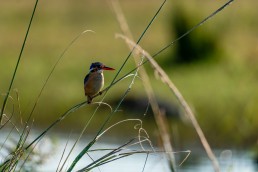
Visiting Lower Zambezi National Park: All You Need to Know When Planning a Safari
Lower Zambezi National Park Fees & Practicalities
Lower Zambezi entrance fee per person per day is $30 for self-drives (conservation fee) and $25 per person per day if you’re doing game drives with a lodge (the prices in Lower Zambezi and South Luangwa are the same). Zambia has the same policy in all national parks, so when self-driving, the entrance fee is slightly higher.
The national park fees in Lower Zambezi, and in Zambia in general, are valid for a day (6 AM to 6 PM, not for 24-hour period (as in Tanzania, for example).
The entrance fee for a foreign-registered car is $15 per day (GVM under 3000 kg). When visiting Lower Zambezi National Park on self-drive, make sure that you’ve calculated right all the national park fees.
If you book an activity – canoeing boating, or angling – that takes place inside the national park, you need to pay relating activity fees, as well. For example, canoeing costs $20 per person on top of national park fees, and you have to pay the fees of the boat taking you to the channel.
Luxury Safari in Lower Zambezi
If you can afford the splurge, a luxury safari is the best way to experience Lower Zambezi National Park and as described above, staying at Royal Zambezi Lodge will rejuvenate your soul. There are also other luxury lodges inside the park (Royal lies slightly outside park boundary which we saw as an advantage: if on some days you’d like to explore the GMA area on a game drive or walking safari, you don’t have to pay the national park fees).
Camping in Lower Zambezi GMA (Area Surrounding LZ National Park)
On our way, we checked a couple of campsites and for us, one was clearly above all: Wood’s Camp. You can park right at the water’s edge if you wish, views are beautiful, showers are warm, ablutions are clean, and the bar is nice.
Camping in Wood’s Camp is also a bargain: $8 per car/tent per night as opposed to, for example, more popular Mvuu Lodge & Campsite, where camping costs $25 per person. Mvuu has private ablutions but only a couple of riverfront campsites. We preferred the view and atmosphere at Wood’s Camp.
Budget Accommodation and Self-Catering in Lower Zambezi
Our pick for self-catering accommodation in Lower Zambezi GMA is Muchichili Safari House nearby Wood’s Camp. Muchichili is a bargain for bigger groups, as it can accommodate up to 10 people and the daily rate starts from $395. You’ll have a lovely private holiday house with stunning river views and a private cook (all activities and meals except breakfast are extra).
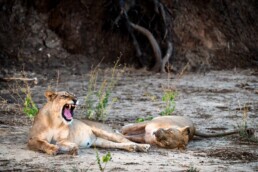
Best Time to Visit Lower Zambezi National Park
The dry season in Lower Zambezi runs from May to October and the tropical wet season from November to April. Generally, the dry season is better for wildlife viewing, but like always, it depends on your preferences and holiday timing. The wet season is the best time for birding and it’s also calving season meaning loads of cute baby animals!
Green season (rainy season) brings tempting discounted rates for luxury lodges and the scenery is stunning with green bush bursting in wildflowers. Rainy season means frequent afternoon storms and heavy showers, but also hot summer weather. November and April are both generally good times to visit Lower Zambezi with only occasional afternoon showers.
Please note that some lodges are only open seasonally during the dry and shoulder season (March/April to November). Royal Zambezi Lodge stays open all-year-round.
If you’re also visiting Victoria Falls, then May–September will be the best timing for your safari in Zambia. Tiger fishing is at its best in September and October.
Fly-in Safari, Road Transfers from the Camp, or Self-Drive?
Lower Zambezi used to be a high-end fly-in safari destination for years, but nowadays it’s risen to the radar of overlanders and self-drive safaris, as well.
Fly-in safari is the easiest and most hassle-free option. Both scheduled and charter flights are available, and the return flight is usually included in the prices of luxury lodges.
Driving from Lusaka to Lower Zambezi National Park (T2 through Kafue)
Some lodges offer road transport from Lusaka to Lower Zambezi, when the shuttle drives through Chirundu. The tar road (T2) from Lusaka to Chirundu through Kafue is decent all the way and rather a quick drive (2,5–4 hours depending on the truck traffic and from which side of Lusaka you’ll start). From Chirundu, it’s gravel and dirt road towards to gate of Lower Zambezi National Park. Some lodges offer also boat transfers.
If you’re self-driving from Lusaka to Lower Zambezi, the same route (T2 through Kafue and Chirundu) is easiest.
The leg from Chirundu to Chongwe gate of Lower Zambezi National Park and doable without 4×4 at least in the dry season, although high clearance is recommended and you must know how to tackle sand and uneven terrain at places. Usually, 4×4 is strongly recommended to tourists.
Please note that between Chirundu and Lower Zambezi National Park there is no network coverage outside villages, virtually no road signs (except to the lodges) and you may encounter wild animals, including elephants, on the road.
Maps.me shows the correct track from Chirundu to Chongwe Gate (Lower Zambezi National Park) but currently Google Maps doesn’t know the route. If you don’t have Maps.me, upload the app, it’s free. Otherwise, ask detailed driving instructions from your lodge or campsite. You can also look for the signs to Mvuu and Muchichili lodges, as they have done the best signage. After Mvuu Lodge, just continue straight until you’ll reach your accommodation (ask other cars directions if needed).
There’s also a fun 4×4 route from Lusaka to Lower Zambezi through Leopard Hills, which we recommend if you have a capable four-wheeler: the landscape is beautiful and some steep inclines, declines, and hairpin bends make it an interesting outing.
When we drove the Leopard Hills route in June 2021, it was slowly being graded by the Chinese, so maybe someday it’ll be tar at least for the first half from Lusaka.
Driving from Mana Pools (Zimbabwe) to Lower Zambezi National Park
Some lodges can also offer pick-ups from Kariba in Zimbabwe or Chirundu (the nearest town in Zambia after you’ve crossed the border).
Driving from Luangwa to Lower Zambezi (for 4×4 enthusiasts wanting to cross the Lower Zambezi National Park)
Some overlanders and self-drivers with a capable 4×4 vehicle also cross Lower Zambezi National Park on their own, but it’s not recommended unless you’re self-sufficient and have the needed recovery gear. We were planning that route but didn’t have enough time for it. Ask for directions and road conditions on DriveZam Facebook group if you’re interested in taking that route!
Royal Zambezi Lodge kindly offered us a 2-night stay in their gorgeous camp in Lower Zambezi but, as always, all opinions remain our own.
Controlling Poaching During Pandemic: Interview with Conservation Lower Zambezi, Zambia
Conservation Lower Zambezi (CLZ) is a Zambian non-profit that focuses on wildlife protection, community support, and environmental education in Lower Zambezi National Park. We visited CLZ’s basecamp and chatted with their Finance and Projects Manager Hanneke Hogerheijde about poaching and wildlife conservation during a global pandemic.
Could you tell us about the poaching situation here in Lower Zambezi before CLZ was founded in 1994 and how it compares to this day?
–CLZ started with the lodge owners who came together to save wildlife tourism in the area over 25 years ago. Black rhinos were all poached out already in the late 1980s and by the mid-1990s also the elephant numbers had reduced enormously.
–In 2016 we had the highest ivory poaching rate ever, but last year we had only one elephant poached in the park. So, we’ve almost reduced poaching to zero, but it’s, of course, an ongoing process.
We’ve heard that you have plans to re-introduce black rhinos in Lower Zambezi – that’s exciting for sure!
–Yes, that’s why we’re investing so hard in the protection, intelligence, training, and special units.
How has your antipoaching work developed through the decades?
–It was hard in the beginning: we had just one Land Rover and a simple basecamp to support the Department of National Parks and Wildlife (DPNW), which lacked funds and resources to protect the wildlife.
–With law enforcement, we started with foot patrols and scouts, who go in the park looking for illegal activities. Then we built specialized units, which are working on intelligence and interrupt poaching. Nowadays we have a K9, rapid response unit, and intelligence unit.
–We have 24/7 communication in our new operations building with high-end information systems. The scouts are patrolling with GPS and smart devices so that we can track everything in real-time.
“We’ve almost reduced elephant poaching to zero.”
Hanneke Hogerheijde, Conservation Lower Zambezi
The buffer zone surrounding the Lower Zambezi National Park is called Game Management Area (GMA) and people live there in coexistence with the wildlife. The area under your mandate is huge, almost 20 000 km2 in total with the GMA. Distances are long and roads either bad or almost non-existent, as we saw driving in. How do you manage this enormous area?
–Aerial and river patrols are in a key role in spotting illegal activities: our Cessna finds almost 80 % of what we find. We’ve also launched helicopter operations in co-operation with South and North Luangwa National Parks.
–The future is the children. We work with 65 schools with our education center, where the kids can spend a few days learning more about the importance of wildlife and how wildlife conservation can benefit their lives.
–We also do outreach campaigns, where our education manager targets the teachers all-round GMA. Thus, we don’t have to drive all kids into our education center: the return trip can be 500 km’s on those bad roads, so all costs add up.
You’ve said that community work is vital to your success. How do you support the communities on top of education?
–We help them with human-wildlife conflict offering extra projects to generate money, building fences, wells, water pumps, and all kinds of other things.
–We’ve also collared elephants to monitor seasonal elephant movements and improve strategies for human-wildlife conflict. When the elephants come into the crops, our scouts will assist the farmers.
How has covid affected poaching in the Lower Zambezi area?
–The snaring has gone up, but it was to be expected, especially in the areas where people live. Most have lost jobs due to Covid-19 because the tourism sector sustains many families in this area.
–Throughout the pandemic, we’ve been able to keep elephant poaching under control. There are a lot of theories, but due to lockdowns, it has probably been even harder to get illegal wildlife products out of the country.
Fortunately, you’ve managed to keep up all the wildlife protection activities through these tough times. How have you been coping financially?
–As an NGO we’re funded by donors. Donors usually want to support specific projects, such as K9, Operations, or patrols. But to be able to execute these projects, we need an organization. Salaries were difficult to cover during the pandemic because we weren’t safe in getting the funding.
–Before covid hit, the membership fees from the lodges were very important supporting the core costs of running the organization. Obviously, with covid, lodge memberships were either cut down completely or the rates were lowered.
–Fundraisers have definitely helped us to survive. Luckily, we have big donors, such as AWC, Tusk, IEF, WCN, Save the Elephants, and Elephant Crisis Fund. We’ve also done online auctions with prices from the member lodges.
It’s awful to even think how the poaching situation would be here in Lower Zambezi without your help!
–Throughout the year, we provide almost everything for antipoaching and intelligence operations due to DNPW’s limited resources. We also cover basic 3-month training for the scouts and further refresher trainings.
–Before, the scouts were scouts, but they were sitting under a tree. There was no transport, no food, no tents. If you send patrols out there in the field but they don’t have the training, all the equipment, and the intelligence, what can they do? If you’re only reacting to poaching, you’re almost always too late and will find dead animals.
…And nowadays you also have a K9 unit for detection and tracking.
–Yes, our dogs are trained for all illegal wildlife products. They can find ivory, pangolins, cat skins, rhino horn, bush meat, firearms, and ammunition, and obviously also track the poachers.
With the help of How Many Elephants, Conservation Lower Zambezi launched World Female Ranger Day and a fundraiser to support their female anti-poaching unit.
The Look of Poaching – An Audiovisual Journey
Do you have lion or pangolin poaching here in Lower Zambezi, or is it mainly elephants?
–Elephant poaching is the main, obvious thing for us to control, and with that comes higher protection for all species. When an elephant is poached, there’s a carcass with a face cut off and ivory gone. Lion and pangolin poaching are so much harder to see.
–As far we know, pangolins are not captured in our area. We’ve introduced pangolins back to nature, so they are being confiscated in Zambia. Of course, it’s always hard to know where a pangolin comes from – and the same goes with cats. There are cat skins that go around also here in Zambia, but it’s difficult to say where exactly do they originate.
“Elephant poaching is the main thing for us to control, and with that comes higher protection for all species.”
When it comes to pangolins and other small creatures that are being poached, it’s mainly the sting operations and intelligence that may be able to get them – otherwise, you simply don’t know.
–Exactly. And pangolins are unfortunately easy to catch if you know where they live. It won’t bite you, it can hurt you with a tail lightly, but if you know what you’re doing, it’s easy. The sad thing is that the poachers know it and have no empathy for the animal.
–Poachers try to feed pangolins nshima (maize porridge), which they, of course, don’t eat. They eat termites and ants, but you just cannot feed them ants, it’s a whole process. So, the pangolins are hungry and thirsty, often put in bags. It’s horrible.
–Over the years, I think we’ve had over 30 pangolins that have been released back to the wild. Hopefully, they’re all good, but sadly we don’t know.
So, you don’t track the released pangolins due to limited funding?
–We don’t have money for that. And it’s not that easy: you need a little tracker that you put on the scales. But pangolins shed scales and burrow!
–We’d need a whole new wing for the research. It’d be awesome to know also how many lions and wild dogs there are in the park, even how many hippos we have here.
When publishing this article in October 2021, we’re happy to announce that CSL has launched a new research unit: congratulations!
Support Conservation Lower Zambezi's Fundraiser
Could you give us any estimates on wildlife numbers, or have you had any counts during the years?
–I think the last elephant count was around 2000 elephants inside the park, but it was 5 years ago, and the number was lower than we estimated.
What about for example lion population, do you know how many prides there are within the park?
–It’s hard to say how many lions there are exactly in Lower Zambezi, but hundreds anyway. We only know about five prides. Two years ago, we had one pride dispersing, because they had cubs, so they’re making new couples now.
You also focus on female empowerment: could you tell us more about Zambia’s first female antipoaching team?
–Last year we started training our first all-female community scout unit together with DNPW, and now we have two female scout teams. We call our female anti-poaching unit Kufadza, meaning inspire in the Goba language. These ladies protect the wildlife but also act as role models for women and girls in the communities.
Ways to Support Conservation Lower Zambezi
-
Donate to CLZ through PayPal or Virgin Money Giving (UK)
-
Become an individual member (US$200 per year) or corporate member (US$1000 per year)
-
Sponsor anti-poaching patrols
-
Sponsor K9 unit
-
Sponsor environmental education and community projects
-
Fundraise for CLZ
-
Visit Lower Zambezi National Park and stay in one of the CLZ’s member lodges
-
Volunteer at CLZ
-
Follow CLZ on Instagram, Facebook, and Twitter
Please check out all the current ways to donate and support CLZ on their website with up-to-date donation links: www.conservationlowerzambezi.org
Thank you so much, Conservation Lower Zambezi and Hanneke, for showing us around the basecamp and chatting about your incredible projects and conservation successes!
Our stay in Lower Zambezi and visiting CLZ was sponsored by one of their longtime platinum lodge members, Royal Zambezi Lodge.
Namibia’s Pioneer in Pangolin Conservation: REST (Rare and Endangered Species Trust)
Rare and Endangered Species Trust, REST in short, is world-renown for its vulture and pangolin conservation efforts. REST was the first in Africa to install satellite trackers on vultures and the very first in the world to successfully record a pangolin birth and raise a pangolin pup in captivity. We got a behind-the-scenes look at their work as volunteers: read on to learn more about REST and how you can support their work.
REST as a Vulture Conservation Pioneer in Africa
Conservationist Maria Diekmann founded REST in 2000 to protect Namibia’s critically endangered vultures. Maria saw the plight of the Cape Griffons from a close distance, as her property in Waterberg Plateau was the breeding site for Namibia’s last Cape Griffon vultures. Back then, Namibia’s vultures were on the verge of extinction with only 12 individuals left.
Soon, REST become world-renown for its pioneering satellite tracking technology, successful vulture captures, and releases. REST was the first organization in Africa to fit a satellite tracking unit on vultures in 2004.
REST’s Pangolin Conservation Successes
REST got into pangolin conservation almost accidentally, after rescuing a pangolin who was just about to give birth. Maria Diekmann was the first in the world to record the birth of a pangolin pup – and then to live with a rescued pangolin mom and pup. After three years of rehabilitation, Roxy the pangolin mum and her son Katiti were successfully released in the wild.
Since then, pangolin conservation has been a huge part of REST’s work. So much so, that the local community often calls Maria when pangolins are found or being traded. Many pangolins have received love and care at REST before being successfully released. Over the years, REST has rescued more than 50 pangolins.
REST’s Good Conservation Policy: Rescue, Rehabilitate and Release
REST believes in good conservation, where preservation of the species and welfare of the animals come first. It means that animals are only kept in captivity if their physical or mental health requires it. We couldn’t agree more!
Creating Awareness for the Pangolins
REST has had a huge role in creating awareness and media attention for pangolins. The first-ever pangolin documentary, BBC’s Pangolins: The Word’s Most Wanted Animal (2018-2019), features Honey Bun the pangolin and Maria Diekmann’s passion to save the species.
When we were volunteering at REST, the BBC crew was filming there again. This time Amos the pangolin was the star of the show – we cannot wait to see the outcome!
The Official Trailer: Pangolins – The World's Most Wanted Animal
Why and How to Donate to REST
We’ve witnessed first-hand the invaluable work REST does for the pangolins and other endangered species in Namibia. They keep the maintenance costs low and truly focus on releasing all rescued wildlife back in nature where they belong.
By donating to REST you can be sure that your money goes straight into saving the wildlife: direct care of the injured animals and their rehabilitation, trailblazing research, and educating the local communities.
By donating to REST, you can get a new leaf with your name to the tree of life painting in their visitor’s center. You can sponsor a pangolin for a month or year – or eagles, owls, vultures, or other rescued baby animals. Check out all the sponsoring options on REST’s website: www.restnamibia.org.
Support REST by Visiting Their Wildlife Center in Namibia
You can also visit REST on your way to Etosha National Park because REST is located between Windhoek and Etosha. On a day visit, you will learn more about pangolin conservation, visit a bird aviary, and meet some of the animals that are currently in the wildlife center. If there is a rescued pangolin, on an afternoon tour you might be lucky to accompany its keeper for a little while when the pangolin is foraging in the wild!
As REST tries to release all animals that can safely be released back to the wild, it’s not guaranteed that you will see a pangolin or any other animal that has been in the wildlife center in the past. Still, you will meet some of the resident animals that cannot be released due to their injuries or other reasons. The current long-term, non-releasable residents include for example Ollie the Bateleur (who cannot fly due to the snare injuries), Nesher the Cape Griffon Vulture, and Jacky the jackal.
You can book a day tour here and check overnight experiences and accommodation options here. There are also accommodation, a campsite and further activities available if you wish to stay in REST overnight. All visits need to be booked in advance.
Volunteering at REST: Our Experiences
Volunteers and students have an opportunity to taste the daily life at REST. There are no fixed dates: if you’re interested, just contact REST and agree with them on the length and dates of your stay.
Here’s what we were involved with during our (too short!) one-week volunteering gig at REST:
- Walking and monitoring Amos the pangolin when he foraged in the wild. We were extremely grateful to accompany Amos’ keeper almost every evening. This was obviously our favorite activity and something we will cherish the rest of our lives – thank you REST! Amos sadly passed away in 2020 due to the illness, without conclusive cause of death. Amos was rescued from the wildlife trade and had severe injuries because he had jumped to his freedom from a factory window.
- Taking care, feeding, and playing with a recently rescued baby warthog Max – who is now happily released!
- Daily feeding the birds in the aviary: vultures, eagles, and owls.
- Feeding Thea the duiker, adult warthogs, and Jacky the jackal
- Chopping many kilograms of raw meat – daily (this is why REST needs good scissors, you can see REST’s Amazon wish list here)
- Clearing and burning the bushveld with the staff and other volunteers (hot and physically demanding task but also rewarding as it made the nearby bush better for the pangolins)
- Helping with the daily tasks at the wildlife center, including cleaning indoors and outdoors, making paths, helping with the guided tours, etc.
For volunteers, each day at REST is an adventure. We also got a special treat as a departing gift: on our last night, we watched “Pangolins: The Most Wanted Animal” with Maria at her house. The documentary itself brought us to tears, but to make the moment life-changing, Amos the pangolin walked down to the couch to greet everyone!
Unfortunately, we didn’t meet the word-famous Honey Bun the pangolin, who also starred in the BBC documentary, as she was exploring the wilderness on her own for the whole duration of our stay.
We’ll wrap up with the viral video of Honey Bun the pangolin.
Please consider supporting the incredible work of REST by donating if you can! You can also hit like on Facebook and Instagram to follow them.
Conserving Namibia’s “Forgotten Five”: From Frogs and Vultures to Pangolins
Rare and Endangered Species Trust (REST) has chosen to focus on conserving Namibia’s “Forgotten Five”. The lesser-known endangered species on REST’s list are Cape pangolin, Cape vulture (Cape Griffon), dwarf python, spotted rubber frog, and Damara dik-dik. They are working to save the underdogs, species that are lesser-known to the masses, to preserve biodiversity.
Although pangolins are now labeled as critically endangered and have – deservingly so – jumped into the spotlight of international media, at the time when REST was founded in 2000, none of the “forgotten five” were even listed as endangered by CITES. That makes the choice even braver: imagine how hard it is to get funding for saving species like vultures and rubber frogs that aren’t honestly as interesting for the masses – or the media – as the well-known “Big Five” animals, such as rhinos and elephants!
Wildlife Adventures and Rapidly Changing Plans
Where Are We in January 2021?
We finally returned to South Africa in late November 2020 to continue the expedition. The plan was to explore Kruger National Park and nearby conservation projects during December 2020 and January 2021.
November 2020
After implementing our return plan to Africa in late November 2020, we lived the first weeks around Pretoria, where we did numerous TLCs and upgrades to Honey Badger the Defender. She had been standing for many months while we were away and was in dire need of all the TLC.
Everything went quite smoothly with upgrading our loyal 4×4, and if we have the time, we’ll tell you more about them later. Among other things, we built a sleeping system to the back of the car and upgraded to a heavy-duty suspension; big thanks goes to Rob Keen from Bespoke4x4 for great service and help!
Also, huge thanks go to our new friend Heinrich Gericke who went above and beyond to help us move and store HB the Defender while we were still in Finland! We were blown away by his honest will to help out a fellow traveler, and we continue to be amazed by the general kindness of people in Africa.
December 2020
We did manage to spend almost four weeks in the iconic Kruger National Park! We stayed in several campsites from the South to the North, from the Crocodile Bridge to Punda Maria. During this revival time in the bush, we had many awesome wildlife encounters. Especially with the elusive African Wild Dogs!
We will write a detailed report from our time in Kruger later on! Just after Christmas (on the 28th of Dec), pretty much “out of the blue” came South Africa’s president’s announcement of the new lockdown level and rules. The shift was to “adjusted level 3” – but luckily without any restrictions on movement. So we continued our stay inside the Kruger National Park.
December still brought some disrupting news, as we were hoping to cross the border to Zimbabwe in late January 2021. But Zimbabwe closed its borders during December, and thus we had to change plans again. This time we planned to cross into Mozambique instead.
January 2021 – Are We Stuck or Not?
We came out of Kruger at the beginning of January and stayed a short while around Hoedspruit to reload ourselves and do some “running errands.” We also tried contacting several local conservation organizations and are in the middle of discussions with a few.
We had originally planned to cross into Mozambique on the Friday, 15th of Jan, and had already made accommodation reservations, etc. The next review of the lockdown rules was scheduled to be on the 15th, so we had planned to escape South Africa by then.
But then, without any pre-notification, the president’s announcement came already on Monday, the 11th of January – and it again brought us bad news. South Africa has now closed its borders according to the reviewed regulations of the “adjusted level 3 lockdown” until February 15th. So it seems that we are stuck – again.
However, it’s still unclear whether foreign nationals could still cross the borders to a neighboring country with open borders (with a negative PCR test). The “official” story (the official gazette) says no, but we got the information that it may be possible after all through some of our contacts.
At the time of writing this (Jan 16th, 2021), we are still in the process of figuring this out. If we can go to Mozambique, that will probably be our number one plan. But if not, it may be that we could shortly return to Namibia and then continue onwards through Zambia. It’s all “go with the flow” at the moment, and we’ll update you as soon as we know more!
But one thing is for sure, all this has made our way forward much more difficult at the moment, but then again – nothing is ever easy! And we are not going back to Finland anymore. Instead, we are determined to make this work – no matter what!
In general, we hope that most borders would remain open, and we can continue on our mission through Africa for wildlife conservation. We hope all our friends around Africa will stay safe during this trying time. Everything will pass!
Wildlife needs us more than ever now. We will win this – together!
October 2019 Recap: Wildlife-Themed Road Trip in Namibia & Off-Road Training in Windhoek
After all the Overlanding preparations (see the September recap), we finally got “off-road expedition ready” during October. EDIT: It later turned out that we did not, but we’ll update you on that in December’s recap. We did our first – epic! – road trip with Honey Badger, touring Moon Landscape, Damaraland, Twyfelfontain, and of course, the iconic Etosha National Park.
OCTOBER BROUGHT US STUGGLES AND WILDLIFE SIGHTINGS
We are lagging a bit behind with these monthly recap writings as so much is going on all the time that is eating our time and energy like a monster with an endless appetite. Unfortunately, many of the things happened have not been positive ones but we are going on no matter what.
And we’re going to catch up with this series, so stay tuned! And now, let’s get started with what happened in October.
Serious Off-Road Driving Training on Tony Rust’s Race Track in Windhoek with Henry Bisschoff of Land Rover Owners Club Namibia
We spent a whole day practicing some serious off-road driving with Henry Bisschoff, who is the president of the Land Rover Owners Club in Namibia. Around 10 AM, we drove to the Tony Rust’s Race Track just outside Windhoek and started doing some awesome stuff.
First, we learned how to engage the diff-lock and low-range gears in Honey Badger, and then it was showtime!
We learned how to drive up and down on really steep hills with bumps, holes, rocks, and branches. We also learned how to drive on top of big rocks, and what to do if your engine stalls while you have not reached the top of the hill.
Henry was a very patient and tranquil teacher and made an effort to show and explain things to us thoroughly. The first hills up and down were pretty scary, and our Honey Badger made huge noises while we drove! We were scared that something would break because of the sounds, but Henry said that there’s nothing to worry about, a Land Rover is supposed to make noise when it’s working hard.
Then it was just concentrating really hard on learning new tricks on this crash-course of off-road driving. After getting rid of the fear during the first few rounds, it started to be extremely fun, though very challenging. We learned how to inspect different obstacles, remove dangerous objects, decide on driving lines, and how to work together to tackle an obstacle safely.
Learning what to do if the engine stalls in the middle of an upward hill were thrilling to discover. We practiced with a slope that seemed to be almost 45 degrees steep, and our Landy was at a really steep angle. Staying tranquil and calm is the crucial part of off-road driving, and trusting your car is another one.
New Skills Are Always More Than Welcome
We think that all these news skills will come into use at some point on our journey, although avoiding trouble is high on our list. But you never know how things may turn out, and then knowing what to do is vital.
You wouldn’t think that we just got our driving licenses in May 2019, would you? It’s been a steep and quick learning curve that we’ve had to do, but it’s been fun and rewarding.
At the end of the day, Henry’s feedback was that Piritta took more risks but was a more tranquil driver, and Niina was the opposite, more considering as a driver and more careful. We were a bit surprised to hear this as we would have thought it to be the opposite.
What We Need to Work On
And the thing that we really need to work with to improve was our communication – because when someday there will be a real-life situation, and we have to get through a challenging obstacle(s), good communication and cooperation is the key to successful off-road driving!
We certainly don’t want to get into trouble because of bad communication, so we promise to work on that!
Honey Badger the Defender Showed Us a Different, a True “Bad-Ass” Side
Honey Badger showed a totally different side of her as a car that can go practically almost anywhere if driven correctly and made us very pleased in our choice of car on this expedition. Many people could have a different opinion about Land Rovers and their reliability. Still, then again, many people would defend Land Rover Defenders for being one of the best cars out there for Overlanding.
We, of course, think that Land Rover Defender is the best car on Earth and that it can take you anywhere and will run on practically forever if you just take good care of it. OK, it may need a fair bit more maintenance than some other 4x4s, but if you do the small repairs from time to time, you will have a fantastic beast of a car in your hands.
The Surreal Moon Landscape That Lives Up to Its Name
We had a brief visit of one night to the beautiful Moon Landscape nearby Swakopmund. We wanted to test our gear and get a brief experience of the bush.
The Moon Landscape is not far from Swakopmund. Just drive east on Welwitschia Drive by the road C28. It’s a great destination for a day trip or an overnight trip.
On the way you can see lots of welwitschias and a landscape like nowhere else, carved by the Swakop River.
During our drive we stopped on a few lookout points to take photos of this surreal landscape. Don’t you think that it really looks like the Moon?
WILDLIFE SIGHTINGS AND ROAD TRIPS THAT RAISED OUR SPIRITS
Visiting and Exploring the Western Part of Etosha National Park and the Olifantsrus Campsite
On our second visit to Etosha National Park in the middle of October, we decided to explore the western part of the park, which hasn’t been open to the general public for that long. The western part used to be accessible only to people who stayed in the NWR Dolomite Lodge and no one else.
Nowadays, there are one NWR lodge, the Dolomite, and the still pretty newish Olifantsrus Campsite that has only 10 campsites with shared facilities.
The best thing at the Olifantsrus campsite is the big and impressive, two-story hide built on stilts at a waterhole. From the upper level, you have great views over the pans, and the first floor brings you on eye-level with the game visiting the waterhole.
The lower level is covered with plexiglass, while the upper level has no barriers between you and the wildlife.
We spent two nights in Olifantsrus camp, and on both nights when we were visiting the hide, several black rhinos were visiting the waterhole. It was a humbling experience. Just sit and watch how the black rhinos walked, drank, and fought only a few meters away!
On the first night, there was a small fight between two male black rhinos, the other was a huge one, and the other almost half of his size and the smaller one started the quarrel. It was fascinating to observe. No harm was inflicted on either one of the rhinos, but a lot of growling was sure done.
Meanwhile, a mother and a baby watched from a small distance away, and one other lone black rhino roamed the surroundings. It was like watching a nature documentary, but this one was live in front of us!
The rhinos also came to the waterhole approximately at the same time on the second night, so they’re probably quite regular visitors.
We’d warmly recommend staying a few nights at Olifantsrus if you’re able to arrange a visit to the Etosha West, the hide alone is unique enough. And there are so few cars around compared to the Eastern side, which everyone visits.
Trying to Catch the Desert-Adapted Elephants in Twyfelfontein and Brandberg Areas
We tried long and hard to find the elusive desert-adapted elephants in their common living areas around Twyfelfontein and Brandberg. Unfortunately, despite our best efforts, we didn’t manage to see them; they were always a few steps ahead of us and residing somewhere else.
These desert-adapted elephants are extraordinary ones, the population is estimated to be around 150 individuals today, and one great organization doing excellent work with them in Namibia is EHRA: Elephant-Human Relations Aid.
They’re doing close-knit work with the local communities to promote constructive relationships between the elephants and communities living amongst them.
For example, they’re building walls to protect the crops of the locals and closely monitoring the desert-adapted elephants. EHRA also has a good reputation volunteer program, so if you’d like to donate your time and effort to elephant conservation, this is one of the best places in Africa to do so.
We also caught up with EHRA’s managing director, Rachel Harris, and tried to arrange a meeting with her in person, but unfortunately, this time our schedules just couldn’t match, despite trying hard. However, we have agreed on an interview with her by other means, and you will have the opportunity to read a more thorough article about EHRA and their fantastic work here on our website later on!
Where to Buy Camping and Off-Road Supplies in Windhoek, Namibia
We collected several camping items from Cymot (in the center of Windhoek, the biggest retail shop of the chain), some from Bushwhackers and Sportsman’s Warehouse, and some random things from other shops around town, like Agra.
The tricky thing was that we had to gather all the bits and pieces and drive around town several times, as we gathered all our camping stuff from scratch. Luckily, Christmas was around the corner, and there were already Holiday sales around, so we saved hundreds of Namibian dollars. As money is always tight with us nowadays, we were pleased about these savings.
What Repairs Were Done to Our Car, Honey Badger the Defender, during the end of September and October, and What Did It Cost?
As we told in the September recap, we had to do a lot of things to our car during the month of September and October. And here is a summary of what was done to our great expedition car, Honey Badger, the Defender, and what did it cost.
We bought the car as “fully serviced,” but as it did turn out, everything was certainly not done what should have been, and there were also things not done as correctly as they should have.
But here are the things that were done in September and October:
- Basic Maintenance Service
- Replaced left side tie rod seal
- Repair of the hooter
- Brake and hydraulic fluids drained and replaced. Replenish and bleed systems.
- Diagnostic check
- Oil, fuel, and air filters changed
- Engine oils changed
- Brake fluids changed
- Gear oils changed
- Underbody wash
TOTAL COST: N$ 6834 (which is about 476 USD / 428 Euro)
- Install a second battery
- Install solar panel, regulator, inverter, and plug
- Solar panel bag
TOTAL COST: N$ 7705 (which is about 537 USD / 483 Euro)
- Removing old rooftop tent and installing a new one
- Removing roof rack and welding a brake in a roof-rack
- Installing roof rack
- Repair of poor winch connections
TOTAL COST: N$4200 (which is about 293 USD / 263 Euro)
So, calculating everything together, we lost about N$ 18 739 – which is about 1304 USD / 1174 Euro! A financial loss we did not have prepared for.
So, please, if you could help us in any way, we’d be extremely grateful! There are several ways to give us and the wildlife we’re trying to save a helping hand in here and get some nice perks in the process!
What Our Defender Should Have Had and What Was Promised to Us When We Bought It and What It Didn’t Have Despite the Promises
Like we mentioned in last month’s recap, the car was supposed to have a dual battery system – but it didn’t! So, therefore we had to install a second battery, too. And the batteries aren’t cheap here, either.
Also, the car was sold to us as “having a full service history with agents.” Which also turned out that it did not have! This was a severe lack. From the proper service history, we would have seen what has been done to the car and when. What parts have been changed and when etc.
Now we’re in pretty much absolute darkness about these things and will just have to go and see what comes up. We, of course, tried to solve this issue with the guy (Russell Gilchrist from Swakopmund) from whom we bought the car but, unfortunately, canceling a deal/getting money back here in Africa is extremely difficult.
However, we’re still trying our best as we feel that the car was sold to us with misleading information, and we’d be entitled to at least some reimbursement. Let’s see how it goes.
Losing money, which we don’t have that much in the first place, is very discouraging.
Disappointments and Good Occasions With Other Gear
Many other, unpleasant surprises also unfolded and to mention just a few: we bought the car believing that it had a usable/good conditioned rooftop tent and awning. Like we told, it turned out that the rooftop tent was so old and run down that we had to search for a replacement one. Here is in more detail what we did with that problem.
First, we tried to look for the used ones on different forums around the internet because we certainly couldn’t afford to buy a new one. Without much luck there, we turned to the most famous rooftop tent manufacturers and asked whether they’d want to support our Expedition Conservation and give us a tent to use on our trip.
We were thrilled to get a cooperation deal with Eezi-Awn from South Africa, who kindly gave us a used rooftop tent against promotion on our websites and social media during our expedition. We want to give them a big thank you!
So, we then arranged the freight for the tent from South Africa to Namibia (that cost us about N$2000/USD140/125€).
The awning also turned out to be as old that it was not exactly useful anymore, it would just fall off on the slightest gust of wind. We tried to use it on our trip to Etosha, but it just kept falling down. Having no money to put into a new one, we then sold the old one.
We decided to go without for as long as we’d have some money either to buy a new one or preferably get a sponsorship deal with a reputable awning manufacturer in the future. Luckily, our tent will give us a little bit of shade under it in the meantime.
OCTOBER WAS FULL OF UPS AND DOWNS
Escaping to the Wild Saved Our Month in October
So, all in all, this month was full of ups and downs and without the great trips into the wild areas of Twyfelfontein, Brandberg, and Etosha National Park, which raised our spirits back from the depths of the disappointments, our month would have been a lot worse.
Seeing elephants, lions, zebras, giraffes, and all other wild animals in their natural habitat and just being in nature is the best medicine against any stress! Highly recommendable for everyone.
We also tried to take video clips from the wildlife sightings on the waterholes in Etosha National Park and we’re going to try to find time to edit you some nice wildlife films in the future. They will then be published on our YouTube -channel.
Whatever Happens You Do NOT Quit – Ever!
And whatever happens, we’ve decided that nothing will ever prevent us from going forward! Because whatever you do, you do NOT quit – ever! We’ve both been raised with the Finnish persistence that never allows you to quit, no matter what. In Finland, we have a specific, own word for it: “Sisu.”
And “sisu” is definitely something that we will need here in Africa during this expedition, as some gut feeling is telling us that the hardships are far from over yet.
MONTHLY RECAP OF EXPEDITION CONSERVATION: SEPTEMBER 2019
September 2019 in Windhoek, Namibia:
Preparing for a 3-Year Overland Expedition Through Africa
Our first month in Africa has been quite frustrating and overwhelming. After learning so many new things about overlanding, camping equipment, Land Rovers and spare parts, we feel like we’ve been reborn as overlanders. Read on to catch the highlights and downfalls of preparing our car for a three-year overlanding expedition!
Monthly Recap Series From Africa
We decided to start a monthly recap series about what we’ve been up to and what we have achieved – and about the challenges so far.
Follow Our Daily Wins & Challenges in Instagram Stories
We do try to update especially our Instagram Stories daily so that you can follow our epic overland expedition through Africa in real-time. You can find us on Instagram @ExpeditionConservation and this is our Facebook page.
ARRIVING IN NAMIBIA IN SEPTEMBER 2019
We arrived in Namibia on August 30th with a lot of excitement and anticipation. Our goal for September was to prepare our car and ourselves for the 3-year overland expedition in just one month. Let’s see how we succeeded!
Meeting and Getting to Know Honey Badger, Our Land Rover Defender
We hadn’t seen our car, a 2009 Land Rover Defender 110 Puma before we finally arrived in Namibia. We found her on the last day we were in Namibia at the end of April, before flying back to Finland for the summer. We then bought her and handled all the paperwork with the help of our Namibian friends via email and Whatsapp. Yes, it was daring, but we didn’t have much choice.
At that point, we had searched for a suitable car for many months with the requirements that it should be a 4×4 made by Toyota or Land Rover. We found nothing in months and then on the last few days in Namibia around April we suddenly stumbled upon several suitable cars – including one Toyota Hilux by the side of the road in Swakopmund and our soon-to-be Defender on a Facebook advertisement. However, time posed strict restrictions then already, and we didn’t manage to do any test drives.
Oh yes, it was a massive leap of faith to buy a car without seeing it. Luckily, we had a few good friends who we trust checking the car for us, so we were able to proceed. We named our car the “Honey Badger”, after the true badass African creature who can survive almost anything. As a Defender, she can take us into the rugged African wilderness without giving a duck!
When we got back to Namibia at the end of August, we saw Honey Badger (also known as HB) for the first time. She was waiting for us at our friends’ house in Windhoek. It was so exciting! And it was even more exciting to drive a Defender for the first time – since neither of us had driven a Land Rover before!
A confession: it’s a totally different experience to drive such a big car. We had only driven regular cars before, though not for long – we both got our official driver’s licenses in May 2019!
LEARNING TO DRIVE A LAND ROVER DEFENDER
Learning how to drive a Land Rover Defender is a project of its own, for sure. There are so many things that you’ll have to do differently with a Defender.
The first time when we went on a drive, both of us were scared to death. But luckily, the fright wore off rather quickly, as we got used to handling our Honey Badger in the hectic traffic and narrow, crowded streets of Windhoek. More confessions: we watched a lot of YouTube videos for days to get a grip. But luckily, you can learn a lot from YouTube.
What we’ve learned about driving a Defender by far:
- You have to be gentle when changing gears (it’s a manual transmission, of course). Defender Pumas’ gear boxes are a little clunky, especially when you change from first to second gear. It’s a heavy-duty gearbox, so the shifts aren’t as smooth as with smaller cars.
- You can’t drive fast (never more than 100 km/hour with a Defender to save the engine, also try to avoid sudden accelerations and decelerations)
- You cannot do any quick movements: be gentle and smooth
- You need to control the clutch perfectly with a Defender (they are sensitive beasts). Clutch control gets even more important when off-roading from a hill start: the car should never slip backwards. Even a hilly city like Windhoek has given us nice clutch training. Being precise with the clutch helps a bit with the clunky gearbox, as well.
- You must anticipate the traffic as much as you can. To be honest, the brakes aren’t that good, and the Defender is a heavy car. It’s always better just let the engine brake and lower down gears well before intersections. You can bet that the locals hate us for being snails, when they are overspeeding almost all the time and then doing sudden decelerations at intersections.
- You gotta have patience! All cars are constantly overtaking us (even at solid lines, intersections, etc). Impatient taxi drivers are blowing horns (more than they usually do). Some may shout sometimes. But with a Defender, you just chill and don’t give a duck about them. Ommmm…
We feel that we’re slowly getting the hang of driving a Defender, although we still haven’t tried the low gears. But then again, they are for off-road driving only and here in Windhoek you don’t have much places where to go off-road.
To summarize: Land Rover is a slow-moving truck in city traffic. It’s more like a tractor, really. But we’ve already fallen in love with our Honey Badger. She might be slow, but she can go anywhere.
Learning New Things About Defenders and Their Maintenance
We have also learned many new things about Defenders. Especially Niina has spent countless hours reading different 4×4 forums and watching videos. For example, we know where to look for corrosion (a huge problem near the Atlantic coast and an unfortunate issue with Defenders).
We know which things to keep an eye for when driving in the bush (for example oil leaks and keeping everything tightly fastened on corroded roads). We still need more training, but we know that we can do this!
We’ll show you around Honey Badger during the upcoming weeks and tell more about Defenders in general. Just keep an eye on our social networks!
Up Next: Off-Roading
We are planning to have some proper 4×4 driving training before venturing off to the bush. We hope to do the first course already within a week and then explore Etosha National Park to learn more on our own. Then, we’re planning to do some sand driving lessons in the Namib Desert later in October.
Why haven’t we been able to do it yet? Well, because we still have not been able to gather all the equipment needed. We only got a good air compressor for changing the tire pressures a few days ago – and this is an essential tool before going on gravel roads.
So, what we’ve been up to then, besides learning to drive in a whole new way? Gathering and evaluating equipment for weeks!
THE MAIN CHALLENGES DURING SEPTEMBER: ROOFTOP TENT, BATTERY, AND LAPTOP
Everything didn’t go exactly as planned with our Land Rover Defender in the beginning. We bought HB in the belief that she had a good rooftop tent and a dual-battery system already in place. However, it turned out that the rooftop tent was rundown, missing poles and overall so dirty and old that we cannot use it. That was a major disappointment for us, as we had thought that we wouldn’t need to buy a new, expensive tent.
A bit later it also turned out that our Defender had only one battery, after all. One of our friends who checked the car for us had had a misunderstanding about the battery system. We just had an empty battery cover instead of the auxiliary battery.
The guy who sold us the car is a reliable lad and turned out to be extremely helpful with our aftersales issues. He hadn’t even checked the tent’s condition. He should’ve had, of course. And because we didn’t saw the car ourselves before buying it, we didn’t know. Buying the car without seeing it ourselves was a conscious risk that we took and it had some consequences. But there’s nothing much you can do about it than just deal with it.
So, we have to get a new rooftop tent. Good rooftop tents are costly, but luckily it seems now that we have managed to sort that thing out in a very positive way!
We cannot wait to tell you more about it – and to showcase our new “apartment”. At the moment we’re still trying to sort out how to ship the new tent from South Africa to Windhoek. That’s also a kind of a project on its own, but we hope to solve it during this week.
One of the most stressful challenges by far has been with Piritta’s MacBook Pro. It’s a long story and a long fight with Apple that we ended up losing. The laptop had a defect battery, which Apple promised to service in Finland within three weeks before we left (the laptop belongs to the defective battery batch of the mid-2015, so there was no way we could have flown with it).
Well, Apple totally messed up the service. Then, Apple promised to service the laptop in Central Europe and send it to Namibia before the end of September. Last week, they suddenly refused to ship the laptop here, against our written agreement.
Shipping the laptop from Finland to Namibia turned out to be nearly impossible, outrageously expensive, and a tiring process with a ridiculous amount of paperwork. We would have needed to declare the laptop (and pay customs), on top of paying for the freight. Then, we would have needed to get special permission to import it to Namibia (our local friends said that it’s practically impossible to get those kinds of papers here).
So, we came up with a new solution. Niina’s mum is flying here in November, bringing Piritta’s laptop with her and doing a little safari with us and Honey Badger – stay tuned!
We also decided that we could offer that kind of exclusive trips later on – would you like to join the expedition?!
If we get enough interested people, we could start planning the first, epic and exclusive adventure.
But please bear with us: we’re behind with work, as we have only one laptop to share. We’ll definitely do more updates, photos, and videos when we finally get Piritta’s MacBook Pro back in the beginning of November!
HONEY BADGER’S VISITS AT THE LANDY WORKSHOP IN WINDHOEK
We decided to take Honey Badger to a reputable Land Rover mechanic for “a final check” before leaving for the bush. First, the positives: HB had gone through major check-up and repairs before being sold to us, and we were happy to go through all the receipts.
We found a good Landy shop here in Windhoek, called Mobile Diagnostic Technician. It’s owned and run by Henry Bisschoff, the President of Namibia’s Land Rover Club. Henry has been very helpful and a great source of information.
On the first workshop visit, Honey Badger was oiled and lubricated all over and had some minor fixes done. Another shop had told us that our gearbox was leaking pretty badly, so we were expecting the worst. Luckily, it turned out that the transfer box had just a minor leak, which we need to watch (such leaks are among the common issues with Defenders).
Last week Honey Badger spent three days at the workshop again, this time getting a new dual-battery system with a solar panel.
We hadn’t been expecting to pay so much extra money for preparing the car. But in the end, these have been necessary preparations. We hadn’t originally planned to install a solar panel system but ended up doing it after thinking about it carefully.
The solar panel system will always keep our batteries charged up properly – and it’s an endless supply of free, sustainable energy. Besides the two car batteries, we can also charge our laptops, cameras, and phones on solar.
WHAT WE PLANNED TO DO IN SEPTEMBER BUT HAVEN’T MANAGED TO ACCOMPLISH YET
Originally, we had planned to get all the preparations done in September so that we could hit the road on October 1st. But rarely all things will go according to plan, especially here in Africa. Luckily we have already gotten used to the slow pace of Africa after recently spending seven months here.
In theory, we might have been able to leave on October 1st, if the rooftop tent would have been in good condition, HB would have had a dual-battery system from the beginning, we would’ve been able to find all the equipment much quicker and done some off-road rehearsals already, among lots of other minor things.
But as things didn’t go quite like that, we are now a bit behind the original schedule. Personally, it’s not a big surprise. In the end, we think that we’ll still have enough time in Namibia before our visas expire in late November.
And if we feel that we’d need more time, we can always go and apply for a visa extension. Here in Africa, you’ll never know how long extension you can get, but it’s still always worth a try.
WHAT’S NEXT?
Now in October we will continue gathering the last equipment still needed: some recovery gear and basic repair tools for the car, essential spare parts, and the remaining few camping gears. We will also need to learn some basic bush mechanic skills and off-road driving.
Henry from the local Land Rover Club has promised to teach us some repair and maintenance skills. We’re looking forward to learning from the expert!
As soon as we have the new tent (and have sold the old one), we will make our first test trip to Etosha National Park for a couple of days. We need to test all our gear and new skills in practice, and then decide whether we still need some more equipment or training.
During October, we’re also planning to visit Damaraland and its desert elephants and a couple of conservation projects here in Namibia. We’ll keep you updated!
Like described above, September was quite frustrating for us. It’s been very time-consuming trying to get all preparations done and fighting with the unexpected challenges. Many times we haven’t had any other choice than wait. Things just take time here in Africa. We have tried our best. And that’s all you can do.
Luckily, we can stay in Namibia at least until the end of November, so we will still have enough time to visit all national parks and wildlife conservation projects we have planned. Wish us luck – and that from now on things would go a bit more according to plans, will you?
MORE UPDATES FROM THE ROAD
We’ve just created a new YouTube channel, where we’re going to publish frequent video updates about Expedition Conservation. Expect stunning sceneries, close encounters with animals, heart-melting conservation projects, and stories from the road.
Subscribe to our YouTube channel here to share this adventure with us!
INTERNATIONAL WORLD RHINO DAY
Today, September 22, marks every year as the international World Rhino Day. It was first announced by World Wildlife Fund-South Africa in 2010.
International World Rhino Day is a day when the world joins its efforts to help and promote the conservation of its endangered rhinos. Although we thank that every day should be a rhino day. Just as it should be an elephant day, giraffe day, pangolin day, or any other species’ day that is threatened with extinction.
Nevertheless, it’s still a good thing to have a dedicated day for the world’s many endangered or critically endangered species. Days like these will help to raise awareness. And at least on that one day in the year, the great public’s attention is geared towards the plight of the species. And perhaps days like these will make some more individuals understand better the harsh reality of the situation.
And if, for example, the World Rhino Day today makes even a few people more concerned about the rhinos’ future, it is one goal achieved. You never know who ‘s the one that’ll make the ball rolling in significant quantities and who will make a tremendous difference for the species and its conservation efforts.
The Sixth Mass Extinction
We are all collectively responsible about the sixth mass extinction that scientists say is ongoing as we speak. The fifth one was when the dinosaurs vanished from the earth.
So, we are also all collectively responsible for trying to still save as many species from extinction as we can.
The world’s all five rhino species, the Sumatran, the Javan, the Greater one-horned, the White and the Black rhino with all their sub-species are one of those desperately in need of saving.
Meeting Sudan, the Last Male Northern White Rhino
In 2015 we met the world’s last male northern white rhino, Sudan, at the Ol Pejeta Conservancy in Kenya. Somehow our world has never been the same again. On that day, when standing beside Sudan, I realized that I was literally looking extinction to the eye. And I cannot describe the emotional rollercoaster I had going inside me.
It still took a few more years for my true calling to clarify to myself. But it was that day at the Ol Pejeta Conservancy that sparked the fire to do my share in any way I can in helping of the survival of the species. This Expedition Conservation is part of that share, through this project we’re aiming to help as many animals and organizations as we can.
A New Hope Arises for the Saving of the Northern White Rhino
Sudan died in 2018, leaving only two northern white rhino females to the world, Najin, and Fatu. But people didn’t give up the fight – on the contrary. European and African conservationists, researchers and scientists joined their forces like never before and started working towards a mutual goal: to bring back the northern white rhino with the help of the in-vitro fertilization (IVF) technique.
And in August 2019, there was the breaking news from Kenya about the successful harvest of eggs from the two remaining northern white rhinos, Najin, and Fatu at the Ol Pejeta Conservancy. These eggs were sent to an Italian laboratory for the creation of embryos.
The whole world is now holding its breath when waiting for more positive news about this groundbreaking project that can turn the tide in the fight against extinction.
And as sad as the passing of Sudan was to the world, it has also sparked many positive things. It has made people think on a whole other level about what extinction really means. And I’m sure that it has also encouraged many people to concrete actions towards a better future for the endangered species.
The Problem of Poaching
But we cannot rely on science alone to fix the problems we caused in the first place. We’d also need to concentrate on solving the issues in earlier stages.
Poaching is one of the biggest reasons why so many rhino species are endangered or critically endangered today. And the war against poaching down on the frontlines in the nature conservancies is very real. It is a fierce battle where rangers are killed every day in the line of duty when trying to protect the animals.
However, as much as it is a war with automatic weapons and tactical, special operations in the areas where the animals live, it’s a battle on the grounds of education.
Education is One of the Keys Against Poaching
Even in the modern-day world, there are still beliefs, especially in the East, that a rhino’s horn has some healing properties – which simply is only superstition. Rhino’s horn is just made of keratin, like our own fingernails or hair and it has no healing qualities whatsoever.
But when there is demand, there will be people who are willing to supply, at any cost. So, one of the most effective weapons we have against poaching is education. Education and raising awareness is essential.
When people learn and accept that rhino horn has no magical nor healing powers, the demand will eventually decrease. This is a long way to go, and it’s hard to override centuries-old beliefs, but the effort will be worth it.
And the same solution can be used with so many other species, too. Think about the world’s most poached mammal’s, pangolin’s scales, for example. They are also only keratin, like the rhino’s horn.
Of course, there are other obstacles, too, like that a rhino’s horn or an elephant’s tusk is considered as a status symbol in some countries. But education and a complete change in peoples’ beliefs and attitudes through education is still in a vital role.
However, one of the main questions is, do we still have time to save the species through education only? Probably not, as beliefs and attitudes change slowly. But we still have to try our best.
Help the Endangered Species Today
In the end, we can only achieve lasting results in the conservation efforts of the rhinos, as with all other species, too, by working together. Together we can make a difference. Together we can still save the world’s iconic creatures for the future generations to admire, in their natural habitat. It’s not too late yet, but only in a couple of decades, it will be too late. The time to act is now!
And today, on the international World Rhino Day, we can start by spreading the awareness about rhino conservation and maybe donating a small amount to your favorite conservation organization. They are working endlessly towards saving the species that had walked on this earth long before humans ever did.
Remember, no act is too small, and action is what counts, in the end!

